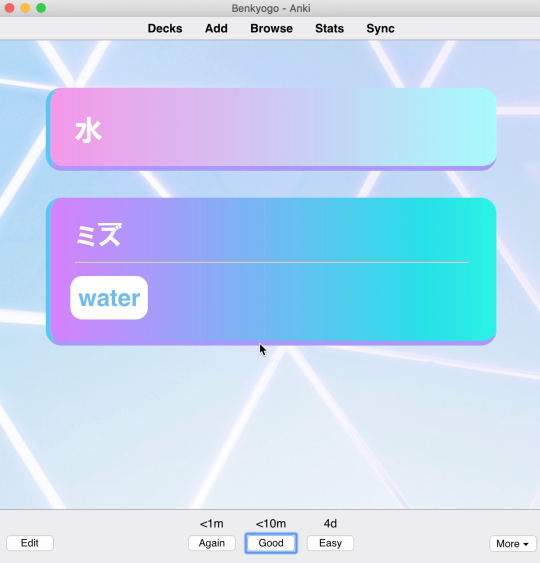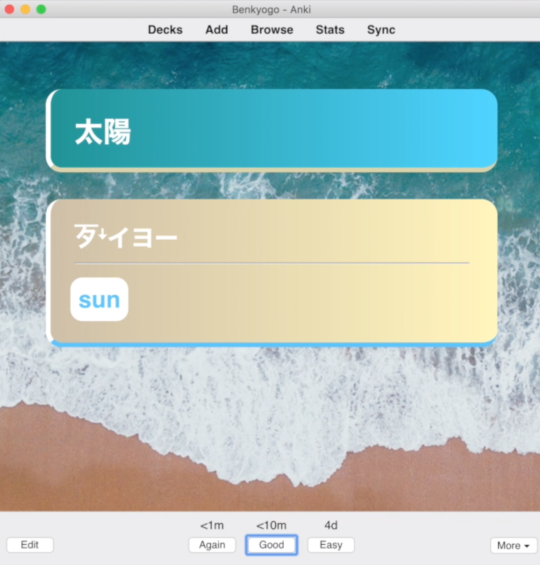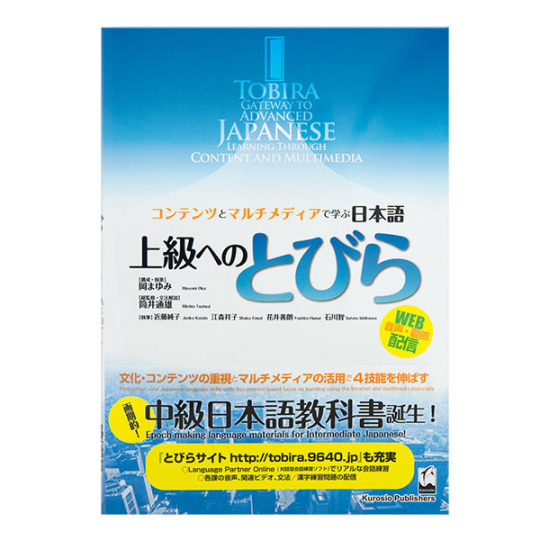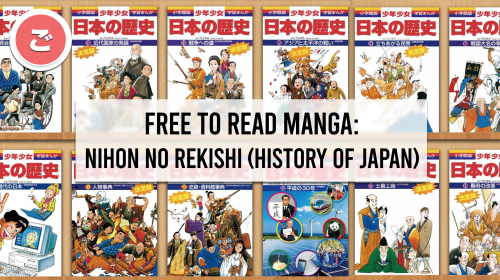#study japanese
What is the Kanji Kentei? 漢字検定: The Ultimate Guide to the Japanese Kanji Proficiency Test
Welcome to Benkyogo!
- - - - - - - - - - - - - - - - - - - - -
Links:
Read the blog post here: https://benkyogo.co.uk
Example Test Papers (official site:) https://tinyurl.com/yxkw3gbn
Benkyogo Store: https://www.etsy.com/uk/shop/Benkyogo
Instagram: @benkyogo
- - - - - - - - - - - - - - - - - - - - - -
⛩ Visit the Benkyogo blog for more ways to learn Japanese!
https://www.benkyogo.co.uk/
Welcome to Benkyogo!
- - - - - - - - - - - - - - - - - - - - -
Links mentioned in this video
日本語単語スピードマスター Textbook: https://tinyurl.com/yxtunjay
Benkyogo Blog Post: https://benkyogo.co.uk/?p=2407
Benkyogo Store: https://www.etsy.com/uk/shop/Benkyogo
- - - - - - - - - - - - - - - - - - - - - -
⛩ Visit Benkyogo.co.uk for more ways to learn Japanese!
https://www.benkyogo.co.uk/
X は Y で{有名だ/知られている} - X IS FAMOUS/KNOWN FOR Y
——————————————————————————————————
See all JLPT N4, N3, and N2 grammar revision points HERE
——————————————————————————————————Grammar 文法:
X は NOUN で {有名だ/知られている}
OR
X は SENTENCE (plain form*) こと で {有名だ/知られている}
- 有名だ = famous for, 知られている = known for
- The ‘plain form’ of a sentence is a sentence that ends in the dictionary form of a verb (e.g. 食べる), with noun/な-adjectives ending in だ (e.g. 学生だ or 静かだ), and with い adjectives ending with the final ‘い’ attached to the adjective (e.g. おいしい)
- 有名だ and 知られている can often be used interchangeably dependent on context.
Meaning 意味:This grammar point is used to express that ‘X’ (the topic of discussion) is famous for either a thing (noun) or a certain phrasal noun (e.g. having something, doing something, and so on).
Examples 例え:
ラスベガス は たくさんホテル がある こと で 有名です。
Las Vegas is famous for having many Hotels.
- Make sure you don’t forget ‘こと’ after a sentence when using this structure.
熊(bears) は 冬眠する(to hibernate) こと で 知られています。
Bears are known for hibernating.ロンドン は バッキンガム宮殿 で 有名です。
London is famous for Buckingham Palace.
- - - - - - - - - - - - - - - - - - - - - -
⛩ VisitBenkyogo.co.uk for more ways to learn Japanese
Watch Benkyogo on YouTube.
Benkyogo Store: https://www.etsy.com/uk/shop/Benkyogo
Post link
~ たがる/~ほしがっている - ACT LIKE/ACT LIKE YOU WANT TO DO SOMETHING/ACT LIKE YOU WANT SOMETHING
——————————————————————————————————
See all JLPT N4, N3, and N2 grammar revision points HERE
——————————————————————————————————Grammar 文法:
いadjective: ーい, +がる e.g. 怖い -> 怖がる
なadjective: ーな, +がる e.g. 静かな -> 静かがる
Verb (past た form) + がる
Noun を/が ほしがっている
- たがる (conjugated from たい - to want) and ほしがっている (from ほしい - to want an object) are used when describing when someone acts as if they want to do something (in the case of たがる) or want something specific e.g. an object (in the case of ほしがっている
Meaning 意味:This grammar point is used when you are guessing how someone is acting or what someone wants based purely on observation.
Say, for example, someone is grinning ear to ear. You could say ‘She’s acting like she’s happy right now!’. (幸せがる) [happy is an adjective]
In terms of wanting something, your girlfriend could be making hints at how much she loves roses near valentines day. You could use this to say ‘Boy, she’s really acting like shewants some roses for Valentines day!’ (X を/が ほしがっている) [when a specific object is wanted, use ほしがっている]Examples 例え:
彼 は 怖がる!
He’s acting all scared!
- 怖い is conjugated here, as we are talking about an adjective
彼女 は いつも 泳ぎたがる・・・
She always acts like she wants to go swimming…
- + たがる is used because it is the conjugated form of ‘泳ぎたい’ - want to go swimming. It’s a verbal action, not an adjective or specific object of desire.
妻 は ルイヴィトンのバッグ を ほしがっているんだけど、そんなもん、買えないでしょう!
My wife is acting like she wants a Louis Vuitton Bag, but I can’t afford things like that!
- + ほしがっている is used instead of たがる because we are talking about what she wants, not what she wants to do (using a verb).
⛩ VisitBenkyogo.co.uk for more ways to learn Japanese
Watch Benkyogo on YouTube.
Benkyogo Store: https://www.etsy.com/uk/shop/Benkyogo
Post link
Due to the long school closures in Japan, the publisher of the famous kid’s educational manga 日本の歴史(nihon no rekishi, History of Japan) has made all 24 volumes available to read for free online until August 31st, 2020!
Check out the manga for free via this link! You can also read the press release here.
Nihon no rekishi is essentially set of history books - they introduce children to Japanese history from past to present. The books are aimed at children - so plenty of easy-to-understand scenarios and furigana abound!
Be sure to check out a few volumes before they’re all gone!
- - - - - - - - - - - - - - - - - - - - - -
⛩ Visit Benkyogo.co.uk for more ways to learn Japanese
Benkyogo Store: https://www.etsy.com/uk/shop/Benkyogo
Post link
Welcome to Benkyogo!
- - - - - - - - - - - - - - - - - - - - -
Links mentioned in this video
CSS Template: https://pastebin.com/n6BUFaWy
Gradient Generator: https://cssgradient.io/
Free Stock Photos: https://www.pexels.com/
Benkyogo Blog Post: https://tinyurl.com/y73eg45f
View this template working on the mobile Anki app: https://imgur.com/gallery/NPJSfPc
Benkyogo Store: https://www.etsy.com/uk/shop/Benkyogo
- - - - - - - - - - - - - - - - - - - - - -
⛩ Visit Benkyogo.co.uk for more ways to learn Japanese

Check out the accompanying YouTube video here for detailed instructions.

I’ve been using Anki for over 10 years to study Japanese. It’s one of the best ways to learn and remember vocabulary, especially when everything starts to look the same…
I have created a Copy & Paste CSS code to use with your Anki decks. It is fully customizable, using the this gradient generator. You can find high quality, free stock images here on Pexels. You can see a quick video of the template working on the Anki app here.
DOWNLOAD FREE CUSTOM CSS HERE!

Check out the YouTube video for detailed instructions and more!
Have fun customizing, creating, and most of all - learning!!

Folllow Benkyogo on YouTube!
⛩️Check out the Benkyogo Store!
Welcome to Benkyogo! - - - - - - - - - - - - - - - - - - - - -
Drama’s mentioned in this video:
- Hana Yori Dango (花より男子)
- Kekkon Dekinai Otoko (結婚できない男)
- Densha Otoko (電車男)
- Gokusen (ごくせん)
- GTO
- - - - - - - - - - - - - - - - - - - - - -
⛩ Visit the Benkyogo blog for more ways to learn Japanese!
Welcome to Benkyogo!
- - - - - - - - - - - - - - - - - - - - -
Links mentioned in this video
Read the blog post here: https://tinyurl.com/yc42l87a
- - - - - - - - - - - - - - - - - - - - - -
⛩ Visit the Benkyogo blog for more ways to learn Japanese!
https://www.benkyogo.co.uk/

Check out the accompanying YouTube video here. Make sure to look at all the key vocabulary at the end of this post.
On Episode 1 of the Writing Business Japanese Series, we’re looking at how to ask for a quotation. This email can be used and adjusted when you’re looking to get a quote for a certain number of products from a company who you have been in touch with in the past. If it’s the first time emailing, be sure to introduce yourself!
Let’s take a look at the mail in full.
Subject: お見積もりのお願い
山田 様
いつもお世話にっております。
早速ですが、弊社では新たな製品の購入を検討しております。
つきましては、下記の内訳でお見積もりをいただければ幸いです。
記
品名:〇〇
数量:〇〇個以上
お手数ですが、本日中にお送りいただければ幸いです。
お忙しいところ恐縮ですが、よろしくお願いいたします。べんきょうご
Now let’s look in a little more detail.
Subject: お見積もりのお願い
The subject line should be short and sweet. In this case, ‘request for a quote’.
いつもお世話にっております。
This literally means something like “You’re taking care of me”, but in business terms it’s a standard greeting. “ーておます” is used here, which indicates this is a business relationship that is already established. If you are making a new connection, it is sometimes better to say ‘お世話になります’.
早速ですが、弊社では新たな製品の購入を検討しております。
The next sentence is “Sorry for getting right to it, but we’re considering purchasing some of your new items.” The key word here is 早速ですが, which is a way of indicating that you are about to jump right into the main topic of the email.
つきましては、下記の内訳でお見積もりをいただければ幸いです。
記
品名:〇〇
数量:〇〇個以上
The recipient needs to know what they’re quoting for, so you have to give them an itemized breakdown (内訳). By using ‘下記’, you’re saying that you want a quote for the following. When using 下記, you must follow the sentence by starting a list with ‘記’, otherwise the person doesn’t know where to look. So literally, “I’d like a quote with the breakdown as follows, below the 記’
お手数ですが、本日中にお送りいただければ幸いです。
You can include a deadline. Although お送りいただければ幸いです sounds like a tentative deadline, it’s always best to just follow the deadline, and apologise if you can’t make it. Remember, Japanese people aren’t often direct when making requests…
お忙しいところ恐縮ですが、よろしくお願いいたします。
The final keyword is ‘恐縮’ - this means ‘I’m terribly sorry’ and is used frequently at the end of business emails to politely say sorry for taking up the recipient’s time.
KEY WORD LIST
お世話になる: I’m indebted to you
早速 sudden
弊社 our company (formal)
新たな new
製品 product
購入する purchase
検討する considering
下記 the following
内訳 itemized
幸い appreciative
品名 product name
数量 quantity
以上 that’s all
お手数ですが、 sorry to trouble you,
本日中 within today, by the end of today
お忙しいところ while you’re busy
恐縮 sorry
—————
Folllow Benkyogo on YouTube!
⛩️Check out the Benkyogo Store!

Here are 5 essential textbooks to learn the Japanese language from beginner to intermediate level.
STARTING FROM SCRATCH: THE GENKI TEXTBOOK SERIES


The Genki textbooks are renowned for being some of the most accessible beginners textbooks for learning Japanese. They’re well laid out into different chapters, provide vocabulary and Kanji, and you can also acquire workbooks with CD’s that allow you to self-study.
The 23 lessons of Genki introduce students to a wide range of elementary grammar points, nearly 300 kanji, and over 1000 vocabulary terms, which makes this a fantastic starter textbook for learning Japanese.
EASY TEXTBOOK KANJI METHOD: LOOK AND LEARN

This accompanying Kanji book to the Genki textbooks is a great, simple method to learn Kanji through illustrations and mnemonics - little stories that help keep them in your brain. I find this method really successful compared to boring repetition-based Kanji textbooks that exist elsewhere.
The various indexes at the end of the book allow learners to easily look up a particular kanji or kanji vocabulary. The book contains 512 kanji, as well as 3,500 essential vocabulary for beginner and intermediate learners. The book includes all kanji in levels 3 and 4 of the Japanese Language Proficiency Test (JLPT), as well as all kanji in the Genki textbooks.
MOVING ON TO INTERMEDIATE: TOBIRA

When you’ve conquered the Genki textbook series (both I and II), it’s the perfect time to move on to Tobira. Tobira bridges the gap between Genki and advanced Japanese. Although the lessons are intense, with up to 100 vocabulary per chapter, the structure, layout and contents of the book are much more interactive than those in the Genki textbooks - simply because you have more knowledge to work with! The accompanying Kanji book is also brilliant to improve your Kanji recognition.
Tobira will make you realise you can finally read some intermediate Japanese, which Genki doesn’t push you to do.
GRAMMAR: DICTIONARIES OF JAPANESE GRAMMAR

This set of grammar textbooks is known to be the most comprehensive and useful set around. The catch comes with the price - over £100 for the set (a cheaper alternative is listed below).
These dictionaries explain grammar points in terms of how to use them, the differences between one grammar point and other similar ones, and provides many examples in Japanese. A great review of the series can be found on Tofugu, here.
GRAMMAR: WHEN AND HOW? DONNA TOKI DŌ TSUKAU

A cheaper alternative to the grammar textbook series above, the Donna Toki textbook categories grammar points alphabetically, but also includes what JLPT level they would be found in. For this reason, it’s great for learners who are studying for the JLPT.
You can use this supplementary to your main textbooks for more example sentences and explanations. It also includes Chinese and Korean translations.
—————
Folllow Benkyogo on YouTube!
⛩️Check out the Benkyogo Store!

Drama’s can be one of the most enjoyable ways to practice your Japanese listening ability, expand your vocabulary, and understand Japanese language used in every-day situations. For those reasons and more, I present to you 5 of my favourite ‘vintage’ and easy to watch Japanese dramas!
5.電車男 [Densha Otoko] (Train Man)
Episodes: 11
Wiki:Link
Year: 2005
So we start with one of the most popular Drama’s of all time in Japan. Densha Otoko (“Train Man”) tells the story of an Otaku who gets to know a beautiful woman on a train after attempting to rescue her from an attack. He posts about this relationship on a Japanese message board, and the drama centers around the advice he receives from the board’s users.
This drama is amazing and you will love it regardless of your interests. It’s wacky, cheesy, hilarious, but also sincere and there are some tear-jerking moments. Most of all, it shows human emotion in a lovely way. I have to warn you though, it’s a rollercoaster ride (train ride?) - your emotions will be up and down with each episode!
4. 結婚できない男 [Kekkon Dekinai Otoko] (The Man Who Can’t Marry)
Episodes: 12
Wiki:Link
Year: 2009
Next we have a drama with another male protagonist, a 40-year old architect who can’t marry. Or rather, he doesn’t want to. The drama revolves around this man who prefers to be alone but is forced to make friendships and relationships with people around him.
I love Natsukawa Yui who plays the love interest in this drama, and the way the relationship between her and Kuwano (main guy) develops. This drama is really heartwarming and addictive, definitely worth a watch.
Note: trailer is for the second series, “The man who still can’t marry”, released this year!
3. 私が恋愛できない理由 [Watashi Ga Renai Dekinai Riyuu] (The Reason I Can’t Find My Love)
Episodes: 12
Wiki:Link
Year: 2011
This is a different drama to the previous two, in that it revolves around 3 women. However, similarly they cannot find love. This is supposedly a common problem in Japanese society in general and is the topic of many dramas.
This is a great show about the friendships between modern working women who have trouble finding love.
2. 結婚しない [Kekkon Shinai] (I won’t Marry/Wonderful Single Life)
Episodes: 11
Wiki:Link
Year: 2012
Another drama centering around being unable to find love, but I just loved this drama. The three main actors are great, I especially love Amami Yuki as the main actress (she also appears in BOSS, a good old drama), and Kanno Miho (main actress) is super cute.
1. TOKYOエアポート[TOKYO Ea-po-to] (TOKYO Airport)
Episodes: 10
Wiki:Link
Year: 2012
Finally, my most favourite drama of the 2010′s. This takes a different genre to the other drama’s as it isn’t based on a love story but on the difficulties faced working as a newbie in the Tokyo Airport control tower.
I knew nothing about aeroplanes, airports or control towers or had any interest in them, but this is so beautifully filmed and well acted that I was actually really interested in it. The drama is great quality and still feels modern.
—————
Folllow Benkyogo on YouTube!
⛩️Check out the Benkyogo Store!
How to count from 1 ~ 100 in Japanese?☺️










いつもありがとう
[ itsumo arigatou ]
➡️”Thank you for everything”
・いつも[itsumo]→always
・ありがとう[arigatou]→thank you
⚠️”everything” in Japanese is すべて[ subete ]
or ぜんぶ [ zenbu ],
but we don’t say すべてありがとう or ぜんぶありがとう
We always say いつもありがとう
————————————————————
ずっといっしょにいたい
[ zutto isshoni itai ]
➡️”I want to be with you forever”
・ずっと[zutto]→forever
・いっしょに[isshoni]→together
・いたい[ itai ] →want to be
————————————————————
これからもよろしくね
[ korekaramo yoroshikune]
➡️”I want to stay with you forever”
・これから[korekara]→from now on
・も[mo] →as well as / too
・よろしくね[ yoroshikune ]
→please be nice to me
Please keep in touch with me
————————————————————
だいすき[daisuki]
➡️I really like you/ i love you
Thank you for studying with me!!☺️
Have a wonderful day!!
Layla
@nihogo_layla
Bite size Japanese

①Please say “arigatougozaimasu”, not just “arigatou” in public!
“arigatou” is too casual to use in public.
② We don’t have a tipping culture!
③Please talk quietly in public, especially on a train!
But also don’t forget to enjoy your trip!!✨
These are the 7 basic Japanese words that you say differently if you want to sound more #casual and #natural! ☺️
TIMESTAMPS
00:00 Intro : How to sound more casual when you speak Japanese?
00:30 ①いいえ→いや
01:25 ②とても→ほんとに
02:16 ③たくさん→すごい
03:32 ④ごめんなさい→ごめん
04:42 ⑤そして→あと/それに
05:51 ⑥てform+います→てform +ます
06:14 ⑦ますform+ませんか?→ないform?
07:41 Concluding



